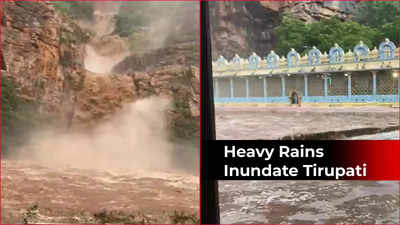Andhra Pradesh Drowning? Unpacking the Flood Crisis and What's Next

The floodwaters have barely receded, but the questions are already swirling: What went wrong in Andhra Pradesh? Was it simply an act of God, or were there systemic failures that exacerbated the crisis? And, most importantly, what can be done to prevent a repeat of this devastation?
Recent events have highlighted the vulnerability of Andhra Pradesh to extreme weather. But let's be honest, flooding isn't a new problem. So, why does it continue to catch us off guard?
One aspect to consider is the state's geography. The state is crisscrossed by major rivers and tributaries, making it naturally susceptible to flooding during heavy rainfall. When intense precipitation overwhelms the existing drainage infrastructure, disaster is often inevitable.

Adding to the complexity, poor urban planning and inadequate infrastructure contribute significantly to the problem. Encroachments on natural drainage channels and unplanned construction impede the natural flow of water, increasing the risk of inundation. Illegal constructions along riverbeds further compound the issue, effectively shrinking the carrying capacity of rivers and streams.
The good news is that solutions do exist. Inspired by the Netherlands' innovative water management systems, Andhra Pradesh has begun exploring gravity canal systems. As Minister Narayana explained, "These reservoirs will play a crucial role in maintaining Amaravati’s safety and ensuring a stable water flow, much like the gravity canal systems that have safeguarded the Netherlands for centuries." This method uses natural gravitational force to direct water through canals and reservoirs, aiding in both irrigation and flood control.
Let's delve deeper into potential long-term strategies:
- Investing in robust flood forecasting systems: Early warning systems can provide crucial time for evacuation and preparation.
- Improving drainage infrastructure: This includes upgrading existing canals and building new ones to efficiently channel excess water.
- Promoting sustainable land use practices: Avoiding construction in floodplains and preserving wetlands can significantly reduce flood risk.
- Community engagement and awareness programs: Educating residents about flood preparedness and evacuation procedures is essential.

The government's "Neeru-Chettu" program, which focuses on water conservation and afforestation, aims to enhance groundwater recharge and reduce soil erosion. Such initiatives play a critical role in building resilience against future floods and droughts. The data from multiple water programs are mentioned in ADDITIONAL GOOGLE DATA. Under National Perspective Plan (NPP) formulated by Government of India, 30 inter-basin water transfer links (16 Peninsular and 14 Himalayan component) have been identified by National Water Development Agency for preparation of Feasibility Reports. Detailed Projects Reports (DPRs) of 11 links, Feasibility Reports (FRs) of 26 links and Pre-Feasibility Reports (PFRs) of all the 30 links have been prepared. The Inter-Linking River (ILR) Programme has been taken up on high priority by Government of India.
Of course, addressing the root causes of climate change is also paramount. While local mitigation efforts are crucial, a global commitment to reducing greenhouse gas emissions is necessary to prevent more frequent and intense extreme weather events. Are we, as a global community, truly ready to make those tough choices?